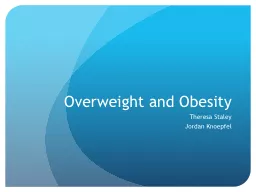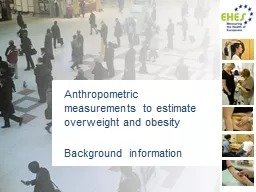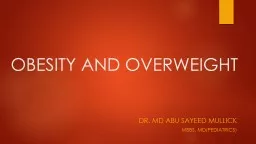PPT-Overweight and Obesity
Author : calandra-battersby | Published Date : 2016-06-11
Theresa Staley Jordan Knoepfel Key Facts Obesity has doubled since 1980 More than 40 million children under the age of five were overweight in 2011 65 of worlds
Presentation Embed Code
Download Presentation
Download Presentation The PPT/PDF document "Overweight and Obesity" is the property of its rightful owner. Permission is granted to download and print the materials on this website for personal, non-commercial use only, and to display it on your personal computer provided you do not modify the materials and that you retain all copyright notices contained in the materials. By downloading content from our website, you accept the terms of this agreement.
Overweight and Obesity: Transcript
Download Rules Of Document
"Overweight and Obesity"The content belongs to its owner. You may download and print it for personal use, without modification, and keep all copyright notices. By downloading, you agree to these terms.
Related Documents














